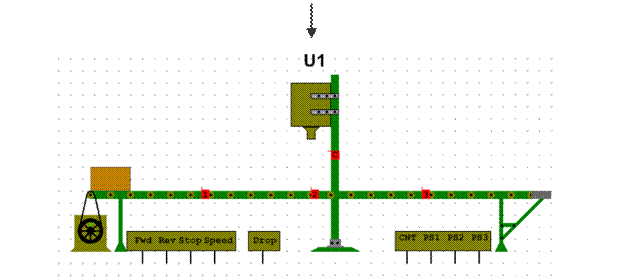Containers
Match up the following containers with the contents below
TEST 5 Match the terms in A with definitions in B A. 1. Additive action 2. anaphylaxis 3. antidote 4. chemotherapy 5. contraindications 6. cumulation 7. drug toxicity 8. potentiation 9. side effect 10. suppositories
B. 1. an agent that is given to counteract an unwanted effect of a drug 2. treatment of illness using chemicals; usually refers to treatment of infectious disease, cancer disease, or mental illness 3. drug action resulting from the administration of small repeated doses of a drug that are not eliminated from the body quickly enough 4. hypersensitive reaction of the body to a drug or a foreign organism. Symptoms may include hives, asthma, rhinitis, etc 5. a toxic (harmful) effect which routinely results from the use of a drug 6. cone-shaped objects containing medication which are inserted into the rectum, vagina, or urethra, from which the medication is absorbed into the bloodstream 7. a type of drug action in which the combined effect of using two drugs together is greater than the sum of the effects of using each one alone; also called synergism 8. harmful and dangerous complications which may arise from the use of drugs. 9. drug action in which the combination of two similar drugs is equal to the sum of the effects of each 10. factors in the patient’s condition which prevent the use of a particular drug or treatment
Test 6
Match the terms in A with definitions in B A. 1. Food and Drug Administration (FDA) 2. generic name 3. Hospital Formulary 4. idiosyncrasy 5. molecular pharmacology 6. National Formulary (N. F.) 7. parenteral administration 8. pharmacodynamics 9. pharmacology 10. Physicians' Desk Reference(PDR) 11. brand name (trade name) 12. chemical name 13. synergism 14. tolerance 15. toxicology
B. 1. reference listing of drugs and their clinical usage found in most hospitals and libraries; published by the American Society of Hospital Pharmacies 2. study of the interaction of drugs and cells or subcellular entities such as DNA, RNA, or enzymes 3. governmental agency having the legal responsibility for enforcing proper drug manufacture and clinical use 4. the study of drugs, their nature, origin, and effect on living organisms 5. a rare type of toxic effect produced in a peculiarly sensitive individual but not seen in most patients 6. type of drug action in which the effect of two drugs acting together is greater than the sum of each acting alone 7. large, up-to-date list of drugs and official standards for their manufacture; issued by the American Pharmaceutical Association 8. chemical formula for a drug 9. study of how drugs achieve their effects in living organisms, including their absorption, metabolism, and excretion from living systems 10. administration of drugs by injection into skin, muscle, or veins (places other than the digestive tract) 11. reference book listing drug products; published privately 12. commercial name for a drug, normally the property of the drug manufacturer 13. study of harmful substances and their effect on living organisms 14. the legal, noncommercial name for a drug 15. condition of becoming resistant to the action of a drug as treatment progresses
Keys
Exercise 1: 1-7; 2-8; 3-9; 4-6; 5-5; 6-4; 7-1; 8-2; 9-3.
Exercise 2: 1-7; 2-10; 3-9; 4-8; 5-2; 6-5; 7-1; 8-3; 9-6; 10-4.
Exercise 3: 1-7; 2-6; 3-2; 4-1; 5-8; 6-4; 7-5; 8-3.
Exercise 4: 1-7; 2-4; 3-1; 4-3; 5-2; 6-8; 7-9; 8-10; 9-5; 10-6.
Test 1:
Test 2: 1-7; 2-2; 3-6; 4-9; 5-5; 6-4; 7-3; 8-1; 9-8; 10-10.
Test 3: 1-13; 2-16; 3-14; 4-1; 5-3; 6-9; 7-15; 8-17; 9-2; 10-11,7; 11-13; 12-4,10; 13-7,8; 14-6; 15-5.
Test 4: a tube of oinment; a jar of cream; a bottle of solution; a box of plasters; a vial of glucagen injection; an ampoule of vaccine; a tin of lozenges; a packet of crystals; a roll of tape; a soap dispenser; a bar of soap; a bag of cotton wool; a cartridge of insulin; a sachet of gauze swabs.
Test 5: 1-9; 2-4; 3-1; 4-2; 5-10; 6-3; 7-8; 8-7; 9-5; 10-6.
Test 6: 1-3; 2-14; 3-1; 4-5; 5-2; 6-7; 7-10; 8-9; 9-4; 10-11; 11-12; 12-8; 13-6; 14-15; 15-13.
Список використаної літератури
1. Григор’єва М.В., Кривич Т.В., Гурко О.Ю., Бабенко М.Ю. Англійська мова для студентів фармацевтичних вузів, Харків – 1996. 2. D. Chabner/ The Language of Medicine. – М., Высшая школа. – 1981. 3. Eric H. Glendinning, Beverly A.S. Holmstrom. English in Medicine. – Cambridge, University Press. – 1998. 4. V.E. Pomeranz, D. Shultz. The Mothers’ and Fathers’ Medical Encyclopedia, New American Library, Inc., New Jersey. – 1972. 5. James W. Long. The Essential Guide to Prescription Drugs. Harper Collens Publishers, Inc., New York. – 1992.
|








